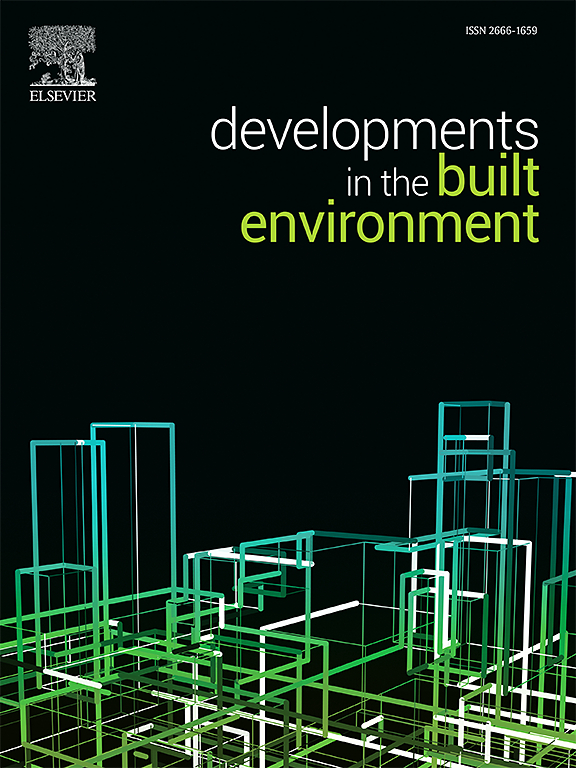可持续多建筑设施中弹性服务和功能恢复的多灾害框架
IF 8.2
2区 工程技术
Q1 CONSTRUCTION & BUILDING TECHNOLOGY
引用次数: 0
摘要
提高多建筑设施在自然灾害下的恢复能力,需要详细了解建筑系统与关键操作功能之间的相互依赖关系。本研究提出了一个系统的、适应性强的框架来模拟这些服务功能的相互依赖性,旨在支持连续性规划和优化中断后的恢复。该框架结合了分层依赖结构、利益相关者信息映射和基于模拟的恢复模型,为面临地震和洪水风险的设施量身定制。该方法应用于加拿大蒙特利尔的一个三栋建筑设施。模拟结果表明,洪水引起的破坏产生的恢复时间比地震造成的恢复时间长约300%。访问系统显示出最广泛的延迟,洪水发生后需要长达2545天的恢复时间,而地震发生后需要500天。在洪水条件下,电力、电信和其他关键服务部门也出现了类似的延误。特定功能的恢复概况显示灾害类型之间存在显著差异。地震后,维修、运输和接收以及海洋服务等基本业务保留了91%至92%的功能,而制造和环境合规等领域保留了82%的功能。相反,洪水造成了更严重的初始损害,质量控制测试保留了50%的操作能力,海洋操作、运输和维护功能下降到约5%。尽管最初的严重程度更高,但与洪水相关的恢复遵循更统一的时间表,大多数功能在1000天内恢复。这些调查结果强调,需要制定反映破坏性质和持续时间的针对具体危害的缓解战略。该框架提供了一个可扩展的决策支持工具,为多灾害环境下的服务优先级、改造投资和长期设施管理提供信息。本文章由计算机程序翻译,如有差异,请以英文原文为准。
A multi-hazard framework for resilient service and functional recovery in sustainable multi-building facilities
Enhancing the resilience of multi-building facilities under natural hazards necessitates a detailed understanding of the interdependencies between building systems and critical operational functions. This study proposes a systematic and adaptable framework to model these service-function interdependencies, aiming to support continuity planning and optimize post-disruption recovery. The framework combines a hierarchical dependency structure, stakeholder-informed mapping, and a simulation-based recovery model, tailored for facilities exposed to seismic and flood risks. The methodology was applied to a three-building facility in Montreal, Canada. Simulation results demonstrated that flood-induced disruptions produced recovery durations approximately 300 % longer than those caused by earthquakes. Access systems showed the most extensive delays, requiring up to 2545 days for restoration after floods, in contrast to 500 days following seismic events. Similar delays were observed across power, telecommunications, and other critical services under flood conditions. Function-specific recovery profiles showed a notable divergence between hazard types. After earthquakes, essential operations such as Maintenance, Shipping and Receiving, and Marine Services retained 91–92 % functionality, while areas like Manufacturing and Environmental Compliance retained 82 %. Conversely, floods caused sharper initial impairments, with Quality Control Tests retaining 50 % of operational capacity and Marine Operations, Shipping, and Maintenance functions falling to approximately 5 %. Despite the greater initial severity, flood-related recoveries followed a more uniform timeline, with most functions restored within 1000 days. These findings underscore the need for hazard-specific mitigation strategies that reflect both the nature and duration of disruption. The framework provides a scalable decision-support tool to inform service prioritization, retrofitting investments, and long-term facility management in multi-hazard contexts.
求助全文
通过发布文献求助,成功后即可免费获取论文全文。
去求助
来源期刊

Developments in the Built Environment
Multiple-
CiteScore
7.40
自引率
1.20%
发文量
31
审稿时长
22 days
期刊介绍:
Developments in the Built Environment (DIBE) is a recently established peer-reviewed gold open access journal, ensuring that all accepted articles are permanently and freely accessible. Focused on civil engineering and the built environment, DIBE publishes original papers and short communications. Encompassing topics such as construction materials and building sustainability, the journal adopts a holistic approach with the aim of benefiting the community.
 求助内容:
求助内容: 应助结果提醒方式:
应助结果提醒方式:


